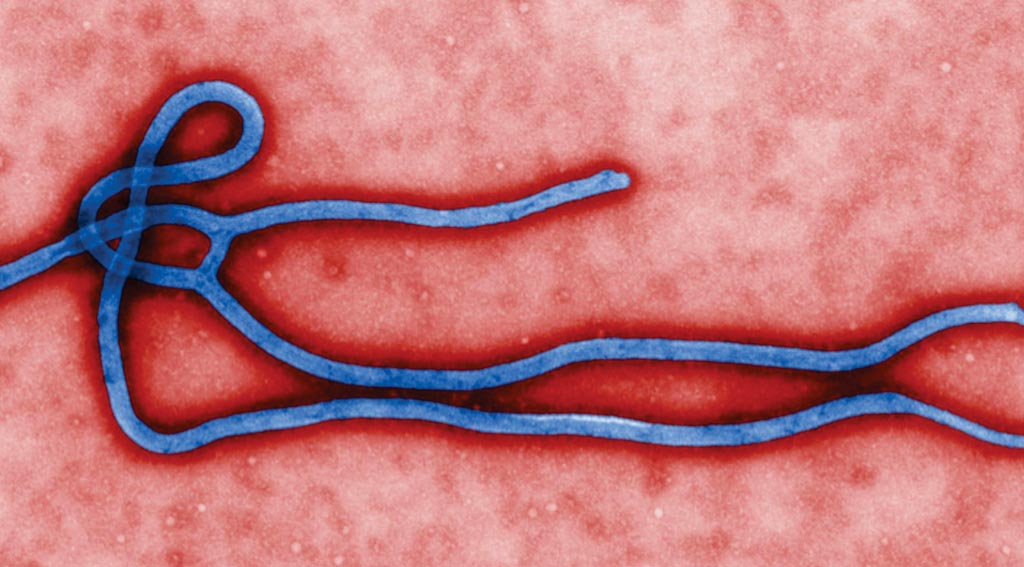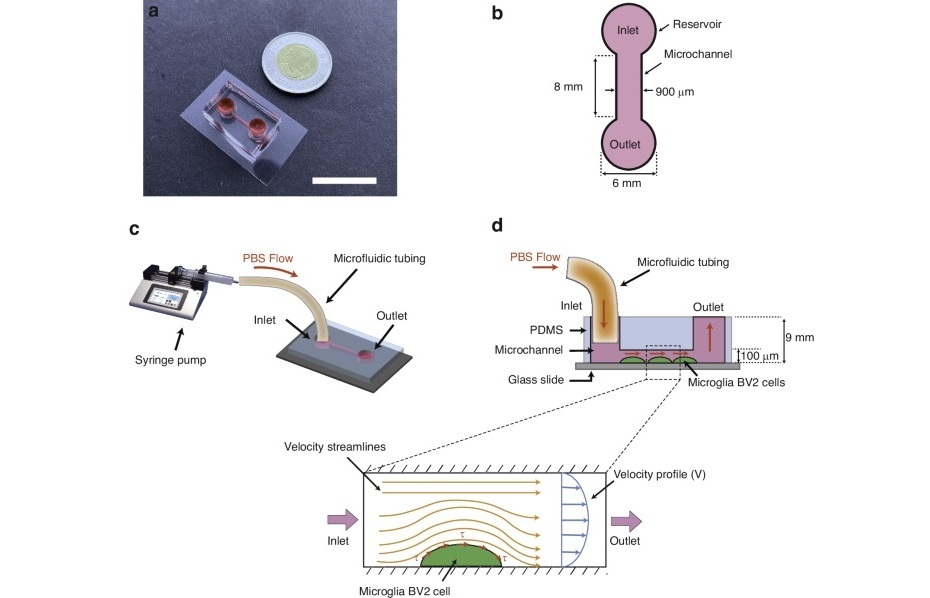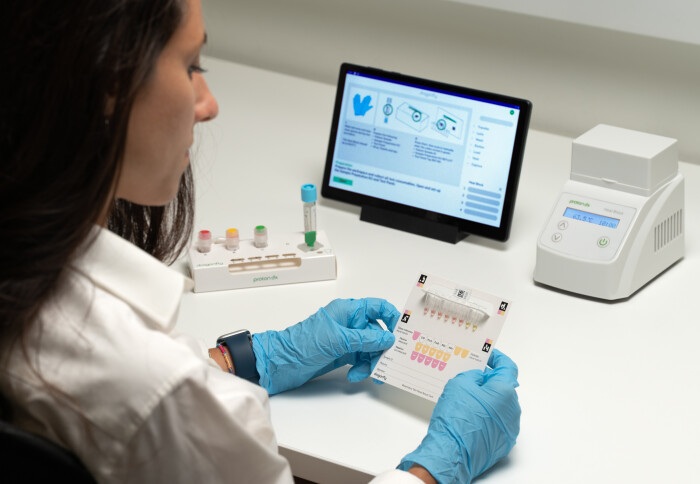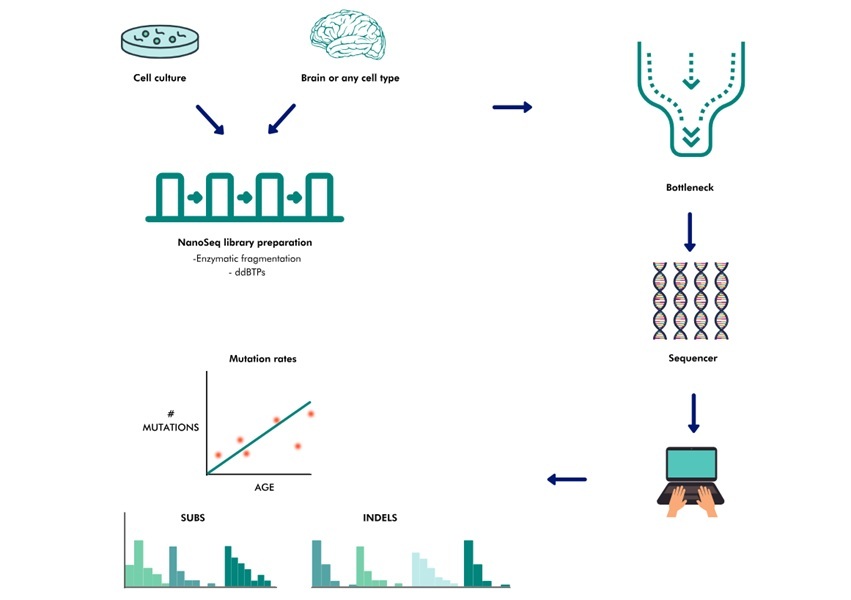Simple and Inexpensive Ebola Virus Disease Test Developed
|
By LabMedica International staff writers Posted on 21 May 2019 |

Image: A digitally colorized, transmission electron microscopic (TEM) image, which reveals some of the ultrastructural morphology displayed by an Ebola virus virion (Photo courtesy of Cynthia Goldsmith / CDC).
Ebola and Marburg viruses can cause severe bleeding and organ failure, with fatality rates reaching 90% in some outbreaks. The diseases spread through direct contact with bodily fluids of an infected person, monkey, gorilla, chimpanzee or bat.
Early symptoms of Ebola and Marburg, include fever, headache and diarrhea, and mimic more common diseases, so there's a critical need for a rapid diagnostic test. Such a test could help in efforts to limit outbreaks by quickly quarantining infected persons. But existing diagnostic tests either are inaccurate or are expensive and require extensive training to administer.
Scientists at the Loyola University Health System (Maywood, IL, USA) have generated a panel of mouse single-chain Fv-antibodies (scFvs) to filovirus glycoproteins (GPs) using cell-free ribosome display and determined their cross-reactivity profiles to all known filovirus species. Antibodies could be the key to diagnosing Ebola and Marburg viruses. An antibody is a Y-shaped protein made by the immune system. When a virus or other pathogen invades the body, antibodies mark it for the immune system to destroy.
The team used a technology called cell-free ribosome display, and generated two synthetic antibodies that bind to all six Ebola and Marburg viruses. The study involved the use of non-hazardous proteins that sit on the surface of Ebola and Marburg viruses. Because the actual viruses were not used in the study, there was no risk of infection to the scientists or the public. The antibodies, which are inexpensive to produce, potentially could be used in a simple filter paper test to detect Ebola virus and the related Marburg virus. If the filter paper turns color, the virus is present. The study was published on May 6, 2019, in the American Journal of Tropical Medicine & Hygiene.
Related Links:
Loyola University Health System
Early symptoms of Ebola and Marburg, include fever, headache and diarrhea, and mimic more common diseases, so there's a critical need for a rapid diagnostic test. Such a test could help in efforts to limit outbreaks by quickly quarantining infected persons. But existing diagnostic tests either are inaccurate or are expensive and require extensive training to administer.
Scientists at the Loyola University Health System (Maywood, IL, USA) have generated a panel of mouse single-chain Fv-antibodies (scFvs) to filovirus glycoproteins (GPs) using cell-free ribosome display and determined their cross-reactivity profiles to all known filovirus species. Antibodies could be the key to diagnosing Ebola and Marburg viruses. An antibody is a Y-shaped protein made by the immune system. When a virus or other pathogen invades the body, antibodies mark it for the immune system to destroy.
The team used a technology called cell-free ribosome display, and generated two synthetic antibodies that bind to all six Ebola and Marburg viruses. The study involved the use of non-hazardous proteins that sit on the surface of Ebola and Marburg viruses. Because the actual viruses were not used in the study, there was no risk of infection to the scientists or the public. The antibodies, which are inexpensive to produce, potentially could be used in a simple filter paper test to detect Ebola virus and the related Marburg virus. If the filter paper turns color, the virus is present. The study was published on May 6, 2019, in the American Journal of Tropical Medicine & Hygiene.
Related Links:
Loyola University Health System
Latest Immunology News
- Blood Test Tracks Treatment Resistance in High-Grade Serous Ovarian Cancer
- Luminescent Probe Measures Immune Cell Activity in Real Time
- Blood-Based Immune Cell Signatures Could Guide Treatment Decisions for Critically Ill Patients
- Novel Tool Predicts Most Effective Multiple Sclerosis Medication for Patients
- Companion Diagnostic Test for CRC Patients Identifies Eligible Treatment Population
- Novel Tool Uses Deep Learning for Precision Cancer Therapy
- Companion Diagnostic Test Identifies HER2-Ultralow Breast Cancer and Biliary Tract Cancer Patients
- Novel Multiplex Assay Supports Diagnosis of Autoimmune Vasculitis
- Blood Test Predicts Immunotherapy Efficacy in Triple-Negative Breast Cancer
- Simple Genetic Testing Could Predict Treatment Success in Multiple Sclerosis Patients
- Novel Gene Signature Predicts Immunotherapy Response in Advanced Kidney Cancers
- New Technology Deciphers Immune Cell Communication to Predict Immunotherapy Response
- AI Model Accurately Predicts MSI Tumor and Immune Checkpoint Inhibitor Responsiveness
- Precision Tool Predicts Immunotherapy Treatment Failure in Melanoma Patients
- Paper-Based Device Accurately Detects Immune Defects in 10 Minutes
- New AI System Uncovers Hidden Cell Subtypes to Advance Cancer Immunotherapy
Channels
Clinical Chemistry
view channel
VOCs Show Promise for Early Multi-Cancer Detection
Early cancer detection is critical to improving survival rates, but most current screening methods focus on individual cancer types and often involve invasive procedures. This makes it difficult to identify... Read more
Portable Raman Spectroscopy Offers Cost-Effective Kidney Disease Diagnosis at POC
Kidney disease is typically diagnosed through blood or urine tests, often when patients present with symptoms such as blood in urine, shortness of breath, or weight loss. While these tests are common,... Read moreMolecular Diagnostics
view channel
Portable Label-Free Device Tracks Alzheimer's Disease in Real Time
Alzheimer’s disease is marked by the accumulation of toxic protein fragments in the brain that damage nerve cells and impair memory. Detecting and tracking these early changes remains a major challenge,... Read more
Liquid Biopsy Test Enables Early Detection of ICI-Related Myocarditis
Cancer treatments have advanced significantly in recent years, but they can still trigger severe and sometimes fatal side effects. Immune checkpoint inhibitors (ICIs), which have transformed cancer therapy,... Read moreHematology
view channel
Viscoelastic Testing Could Improve Treatment of Maternal Hemorrhage
Postpartum hemorrhage, severe bleeding after childbirth, remains one of the leading causes of maternal mortality worldwide, yet many of these deaths are preventable. Standard care can be hindered by delays... Read more
Pioneering Model Measures Radiation Exposure in Blood for Precise Cancer Treatments
Scientists have long focused on protecting organs near tumors during radiotherapy, but blood — a vital, circulating tissue — has largely been excluded from dose calculations. Each blood cell passing through... Read more
Platelets Could Improve Early and Minimally Invasive Detection of Cancer
Platelets are widely recognized for their role in blood clotting and scab formation, but they also play a crucial role in immune defense by detecting pathogens and recruiting immune cells.... Read more
Portable and Disposable Device Obtains Platelet-Rich Plasma Without Complex Equipment
Platelet-rich plasma (PRP) plays a crucial role in regenerative medicine due to its ability to accelerate healing and repair tissue. However, obtaining PRP traditionally requires expensive centrifugation... Read moreMicrobiology
view channel
Fast Noninvasive Bedside Test Uses Sugar Fingerprint to Detect Fungal Infections
Candida bloodstream infections are a growing global health threat, causing an estimated 6 million cases and 3.8 million deaths annually. Hospitals are particularly vulnerable, as weakened patients after... Read more
Rapid Sepsis Diagnostic Device to Enable Personalized Critical Care for ICU Patients
Sepsis is a life-threatening condition that occurs when the body’s response to infection spirals out of control, damaging organs and leading to critical illness. Patients often arrive at intensive care... Read morePathology
view channel
AI Improves Cervical Cancer Screening in Low-Resource Settings
Access to cervical cancer screening in low- and middle-income countries remains limited, leaving many women without early detection for this life-threatening disease. The lack of access to laboratories,... Read more
New Multi-Omics Tool Illuminates Cancer Progression
Tracking how cancers evolve into more aggressive and therapy-resistant forms has long been a challenge for researchers. Many current tools can only capture limited genetic information from tumor samples,... Read moreTechnology
view channel
Acoustofluidic Device to Transform Point-Of-Care sEV-Based Diagnostics
Rapid and sensitive detection of small extracellular vesicles (sEVs)—key biomarkers in cancer and organ health monitoring—remains challenging due to the need for multiple preprocessing steps and bulky... Read more
AI Algorithm Assesses Progressive Decline in Kidney Function
Chronic kidney disease (CKD) affects more than 700 million people worldwide and remains a major global health challenge. The condition often progresses silently, and many patients remain undiagnosed until... Read more
Taste-Based Influenza Test Could Replace Nasal Swabs with Chewing Gum
Influenza is one of the most dangerous infectious diseases worldwide, claiming around half a million lives each year. What makes it particularly insidious is that flu viruses are contagious even before... Read more
3D Micro-Printed Sensors to Advance On-Chip Biosensing for Early Disease Detection
Early-stage disease diagnosis depends on the ability to detect biomarkers with exceptional sensitivity and precision. However, traditional biosensing technologies struggle with achieving this at the micro-scale,... Read moreIndustry
view channelHologic to be Acquired by Blackstone and TPG
Hologic (Marlborough, MA, USA) has entered into a definitive agreement to be acquired by funds managed by Blackstone (New York, NY, USA) and TPG (San Francisco, CA, USA) in a transaction valued at up to... Read more
Bio-Techne and Oxford Nanopore to Accelerate Development of Genetics Portfolio
Bio-Techne Corporation (Minneapolis, MN, USA) has expanded its agreement with Oxford Nanopore Technologies (Oxford, UK) to broaden Bio-Techne's ability to develop a portfolio of genetic products on Oxford... Read more
Terumo BCT and Hemex Health Collaborate to Improve Access to Testing for Hemoglobin Disorders
Millions of people worldwide living with sickle cell disease and other hemoglobin disorders experience delayed diagnosis and limited access to effective care, particularly in regions where testing is scarce.... Read more
















